Dodger Stadium – Rewinding the Clock on the 2020 World Series Champs’ Home with a Hollywood Facelift
- Ken Smoller

- Jul 19, 2022
- 16 min read
Updated: Apr 21, 2023


Janet Marie Smith, currently Executive Vice President, Planning and Development of the Los Angeles Dodgers, earlier this summer at another of her recent ballpark projects – Polar Park, home of the Worcester Red Sox (aka the “Woosox”).
For baseball fans over the age of forty, it may be surprising to learn that Dodger Stadium is now well past middle-age and is the third oldest ballpark in use in Major League Baseball. Given the rapid construction of new stadia and ballparks in the 1990s and 2000s, most of the classic ballparks such as Comiskey Park, Tiger Stadium, Yankee Stadium and Cleveland’s Municipal Stadium have met their demise via the wrecking ball. As a result, only Boston’s Fenway Park (1912) and Chicago’s Wrigley Field (1914) were built before the Dodgers carved their stadium out of Chavez Ravine near downtown Los Angeles.
Prior to the Guggenheim Partner’s purchase of the team and the renovation project, Dodgers Stadium was starting to show its age.
When Dodger Stadium opened in 1962, it was a revolutionary design that immediately made other ballparks seem dated and decrepit. Almost sixty years later, like an aging “boomer” Hollywood actor, the ballpark underwent the knife and was both restored to its former glory and given new features never before imagined. As she had previously done with silent movie-era Fenway Park, architect Janet Marie Smith directed a series of improvements that breathed new life into the home of the reigning 2020 World Series Champion Dodgers.
Before and after photos of the view from behind home plate at Dodger Stadium from 2004 and 2021.
Before we explore the over $250 Million in capital improvements, it is useful to turn the clock back to the original construction of Dodger Stadium. It all began with a Hollywood drama that, depending on who you ask, was filled with an assortment of heroes and villains. The Brooklyn Dodgers shocked the baseball world in 1957 when team owner Walter O’Malley announced that they would be leaving Ebbets Field and making the cross-country move to Los Angeles. Prior to this move, the St. Louis Cardinals were the only baseball team west of the Mississippi River.
For reasons far too complicated for this post, the Dodgers and their hated rivals, the New York Giants, both moved west together and a new era in California baseball began on Opening Day 1958. At the time, most ballparks were aging steel and concrete structures that were largely built before World War I. Instead, Walter O’Malley wanted a modern space age stadium that would instantly turn other ballparks into decaying relics. While their new stadium was under construction, the Dodgers played four seasons at the cavernous 90,000 seat LA Coliseum, which was best known as the site of the 1932 Summer Olympic Games and home to USC football.
Left: The Ebbets Field Apartments replaced the Brooklyn Dodgers’ home from 1913-1957. Right: The Dodger’s first Los Angeles home was the LA Memorial Coliseum, which is better known as the long-time home of the USC Trojans football team and the 1932 & 1984 Summer Olympic Games.

As featured in a museum-style display on the Suite Level at Dodger Stadium, Dodger’s owner Walter O’Malley used this portable model of a proposed Dodger Stadium to woo civic leaders in Los Angeles.
When it opened in 1962, Dodger Stadium was unlike any other ballpark. Given that it was built into a canyon known as Chavez Ravine in Elysian Park, it was constructed without the usual supporting beams blocking the views of fans. Those unobstructed views not only provided Dodger fans with a clear view of their team’s 1960s All-Stars such as Sandy Koufax, Don Drysdale and Maury Wills, but also postcard perfect views of tall palm trees and the San Gabriel Mountains. While those views remain stunning six decades later, the infrastructure of Dodger Stadium required major updates to bring the park in line with modern standards.

Dodger Stadium features one of the most beautiful outfield backdrops in all of baseball.
Despite playing in Brooklyn for over seven decades, most of the Dodgers’ success came after they moved cross country to Los Angeles. With stars like Mookie Betts and Justin Turner, they are primed for more World Series titles.
BUT I DIGRESS… The Dodgers face competition for the sports entertainment dollars of Los Angelenos with the recent completion of SoFi Stadium in nearby Inglewood. The recently-completed $4 Billion home for the NFL’s Rams and Chargers was built on the site of the old Hollywood Park Racetrack and adjacent to the Lakers’ and Kings’ former home of the Forum. While the Dodgers have a huge head start, after twenty professional football-less years, the Rams and Chargers now will vie for the attention of the Southern California sports fans. |
After having no NFL football from 1995-2015, the Dodgers now need to compete for attention with both the Rams and the Chargers and their new $4 billion SoFi Stadium.
For starters, the Dodgers’ owners since 2012, Guggenheim Partners/Guggenheim Baseball Management, and the team’s President and CEO Stan Kasten needed creative solutions to mitigate the vexing problems of LA traffic and parking lot congestion. As a result of the dreaded traffic, fairly or not, Dodgers fans often are maligned for arriving late and leaving early. One incentive for fans to leave their cars at home is the free Dodger Stadium Express Metro bus that brings ticket-buying fans from Union Station and the South Bay station via a dedicated traffic lane. Despite the Jetsons-like promise of a future aerial gondola, Janet Marie Smith needed to focus on additional realistic short-term solutions to address the traffic conundrum.
Despite being blessed with stunning views of the San Gabriel Mountains and being only a few miles from downtown LA, Dodger Stadium always has been cursed by challenging traffic. As a result, Dodger fans are known for arriving late and leaving early to avoid traffic.
One of the tools that she used was to create a variety of attractions throughout the Stadium that would entice fans to arrive earlier at the stadium and stay after the game, thus smoothing out the curve of peak traffic times. For example, one Sunday of each month, the team hosts a pregame family friendly festival called Viva Los Dodgers, including music, dancing, entertainment, autographs, food trucks and more. After the game on Sundays, kids are invited to run the bases and season ticket holders are allowed to play catch in the outfield.
Viva Los Dodgers, a family friendly pregame festival, entices fans to arrive earlier to Dodger Stadium on Sundays.
The crown jewel of these attractions is the new Center Field Plaza, which is like a carnival with a slew of entertainment options. The Dodgers and Janet Marie Smith created their baseball-themed amusement park beyond the outfield walls to entertain fans before and during games.
Left: The view of the new Center Field Plaza beyond the bleachers from the leftfield upper deck; Middle: The Dodgers' "fun map" displaying all the new attractions at Dodger Stadium (map courtesy of the LA Dodgers); Right: Fans mingle with the LA King's mascot on special Friday night fireworks and Kings hockey promotion.
Left: Visiting San Diego Padres fans have fun with the Dodgers' mascot in the Center Field Plaza before a late-season rivalry game; Middle: Beachball lights in Dodger Stadium's signature colors are a lighthearted play on the never-ending struggle between Dodger Stadium security and the fans sneaking the inflatables into the bleachers; Right: One of the multiple children's play areas located throughout Dodger Stadium.
Left: Brooklyn and Los Angeles Dodger legend Tommy Lasorda is immortalized in giant bobble head form; Middle: Fans are invited to watch pregame analysis and interviews at the SportsNet LA stage, which gives them a close-up view of former baseball OCD fidgeting shortstop legend Nomar Garciaparra; Right: The “In the Dugout” Augmented Reality Photobooth.
When Janet Marie Smith worked on the 12-year Fenway Park modernization project, she often adroitly conjured something from nothing. Specifically, Ms. Smith identified dormant or underutilized spaces throughout the ballpark and breathed life into them with newly-created seats, gathering spaces or attractions. I live in Boston and each season that I would return to Fenway Park during the renovation years I would notice some newly-created space out of a nook of the ballpark that I never knew existed.
The most famous of Fenway Park's 21st Century renovations was the conversion of the Green Monster home run screen into the popular and unique Monster Seats.
Janet Marie Smith often created something from nothing at Fenway Park such as turning the rooftop into the Fenway Farm gardens (left), converted a parking lot into the rightfield “Big Concourse” food court (middle), and morphing Gate A ticket booths into mini-museums.
With the Dodger Stadium renovation, Ms. Smith brought her bag of architectural tricks with her and worked cinematic sorcery on the half-century old Stadium. Most significantly, a whole new entertainment world now exists under the outfield pavilions in previously underused space. Specifically, Ms. Smith explained to me that the construction and design team removed “X bracing that provided structural support for the [outfield] pavilions [which had limited] activity under the pavilions. By adding new horizontal supports, we were able to remove the X-bracing, creating usable space for food and bars, restrooms, a batting and pitching cage, a first aid room and other fan amenities under the pavilions.”
Under the leftfield bleachers in the Gold Glove Bar, which is open to all ticket buying fans. On the far side of the bar, fans can watch the Dodgers' starting pitcher warm up before the game.
Left: The Lasorda family has loaned the late legend’s locker room and memorabilia for a rightfield display to the man who “bled Dodger blue“. Middle: Batting cages under the bleachers. Right: A Speakeasy bar open to select season ticket holders and those with the “secret” password.
The removal of the X-bracing under the bleachers made possible by the new support infrastructure. In addition to the under-the-bleacher improvements, a number of improvements were made to the bleachers themselves. There is new bar-style seating in multiple areas, including behind the “batter’s eye” and at the “Home Run Seats” in the first two rows atop the outfield walls.
Left: Seats behind the “batter’s eye” screen. Middle: Restored bleachers in rightfield. Right: The Home Run Seats above the outfield walls.
While the nature of the new Centerfield Plaza might not work for an urban ballpark out East, it fits perfectly with the Southern California lifestyle. Tailoring a ballpark to its environment is a hallmark of Ms. Smith’s projects. She explained to me, “I think it’s important to look at the city you’re in and how people are spending their free time.” Ms. Smith said she observes “what kind of parks, restaurants, museums [people frequent] and how they’re spending their casual time. Everything from the weather to architectural styles vary from city to city, so I really think it is import to take advantage of the fact that baseball doesn’t have a formula and think about the city that you’re in and what is about that city that is meaningful.”
Given that Los Angeles is the epicenter of glitz, glamour and entertainment, the new Centerfield plaza perfectly encapsulates these characteristics. The overall feel has a Disneyesque quality (that sometimes pejorative term is used here with a genuinely positive connotation) that encourages fans to come to the ballpark early and enjoy all the Stadium’s attractions beyond baseball. By giving fans a good reason to arrive well before first pitch, the Dodgers have alleviated traffic pressure by spreading out fans’ arrival times.
Left: Fans can watch batting practice from open doors in centerfield; Right: The bleachers are now connected to the rest of the ballpark via two bridges. As a result, fans now have 360 degree access to all parts of the Stadium.

The bleachers provide a stunning panoramic view of Dodger Stadium’s main grandstand.
Another way that Janet Marie Smith incorporated the SoCal lifestyle into the ballpark was to pay tribute to its car culture. Throughout the Centerfield Plaza, fans will encounter a variety of restored and repurposed vehicles serving various ballpark goodies. Recognizing the distinctions between fan cultures is important to Ms. Smith. When I spoke with her about the differences between the Fenway Park and Dodger Stadium projects, she enthusiastically reflected on the diametrically opposite ballparks.
Ms. Smith explained, “one of the reasons that I have enjoyed the yin and yang of Fenway park vs Dodger Stadium [is because] they could not be more different. That’s important to recognize that you want them to be different. They weren’t born in same generation. Architecturally they are not the same. The climate is not the same. The behavior patterns of fans are not the same. They both have passionate fan bases, that’s for sure, both very knowledgeable fan bases… It’s important to recognize the culture that you’re working with, maybe more than other sports.”
Left: An old firetruck has been repurposed as a lemonade and beer dispenser. Right: A vintage ice cream truck provides frozen treats to Dodger’s fans.
Another goal of the Dodgers was to create a true “front door” for the ballpark. Typically, a ballpark has a grand entryway that creates a focal point for arriving fans. Not only do such ballpark “lobbies” provide a meeting spot for people, but they often are the signature facade feature that distinguishes the venue on television and in photographs. In each of the following nine examples, the front entry lobbies provide(d) fans with access to the main ballpark level either directly behind or near home plate.
Given that no other ballpark in the majors is built into the side of a ravine like Dodger Stadium, they are able to feature distinctive front doors that are the unique signature for each park. Top Row (L to R): Comiskey Park, Chicago (demolished 1991); Fenway Park, Boston; Wrigley Field, Chicago Middle Row (L to R): Memorial Stadium, Baltimore (demolished 2001-2); Jacobs Field (now Progressive Field), Cleveland; PNC Park, Pittsburgh. Bottom (L to R): Minutemaid Park, Houston; CitiField, Queens; New Yankee Stadium, Bronx.
Given the unusual nature of the Chavez Ravine site and its topography, there has never been a clear main “official entrance” greeting Dodgers fans. The closest thing to a typical ballpark entrance was the modest entry facade at the top of the ravine encircling Dodger Stadium. Instead, Dodger Stadium had a disjointed feel, with a series of simple entryways on each of the levels of the ballpark.
The Top Deck entrance was never really a grand entryway that stirred the souls of Dodger fans. Seen here in 1990 (left) and 2003, the entrance had a utilitarian feel.
As part of the redevelopment, the Dodgers spruced up and enlivened the Top Deck entrance and adjacent areas. Specifically, the Dodgers built a new Team Store and created a Retired Numbers Plaza and Legends of Dodgers Baseball exhibit in an expanded entry way. Not only is the area more vibrant, but there is more room for fans to circulate as they enter the ballpark given the expanded footprint. Some unique features always have been present, but fans may have been unaware. Specifically, the Dodger’s promotional materials and ballpark signage remind fans that the Top Deck features amazing views of both the field of play and the downtown Los Angeles skyline.
The Dodgers added both space and vibrancy to the Top Deck entrance by including a Team Store, Retired Numbers Plaza and Legends of Dodgers Baseball exhibits. The team also encourages fans to admire the LA skyline from outside the Top Deck.
Before the renovations, getting to the Top Deck was challenge. For starters, navigating the steep hills of Chavez Ravine can be a tad disorienting, making it easy to lose track of where you were in the Stadium. Unlike any other ballpark, the Stadium is built into a steep hill. As a result, a fan enters and exits the Stadium at grade elevation for each level of the Stadium. Previously, if a fan wanted to get to a different level, the main method was to exit the Stadium and traverse a series of hilly staircases along the Stadium’s perimeter. With the redevelopment, ballparkesque parkour climbing has been replaced by the addition of five new elevators and four new escalators. Further, new stylish 1962'ish retro signage guides even the most geographically challenged.
The Top Deck now and its commanding views can be reached via escalators and elevators instead of a steep climb.
While the site’s topography prevents the Dodgers from converting the Top Deck entrance (too high above the field of play) or the main level home plate area (substantially below grade) into a conventional ballpark main gate, the team did the next best thing by subverting to concept of the ballpark “front” entrance.
Instead of focusing on the home plate area, the Dodgers recognized that a significant number of fans arrive at Chavez Ravine via the main driveway gate from Stadium Way. Given these traffic patterns, they created a grand entrance in deep centerfield adjacent to primary parking areas. The gate includes an epic statue of Dodgers and civil rights icon Jackie Robinson and huge sign displaying the Dodger’s shooting baseball logo. Not only does this new entrance provide a visually pleasing welcome to the ballpark from most fans’ main access point, but it provides an easy gateway to many activities in the Centerfield Plaza described above.

Countless fans lined up to have their photographs taken in front of the Jackie Robinson statue and the new “Front” gate to Dodger Stadium in Centerfield.
But I digress again… While the Dodgers have done a wonderful job creating an enticing environment to encourage fans to arrive early, there still are a few nearby classic dining mainstays worth visiting. Just about miles and half away from Dodger Stadium is Philippe the Original, which purports to be the creator of the “French Dipped Sandwich”. The restaurant opened in 1908, but has been at its Alameda Street location in downtown LA since 1951. Besides the legendary menu, the restaurant features a huge collection of Dodgers memorabilia, a rare row of old phonebooths and sawdust covered floors. On the evening we were there, it was packed with both USC and Dodgers fans for pregame grub. Despite the crowd, the line moved fast and there were plenty of tables. |
Phillippe the Original is the creator of the “French Dip Sandwich” and is just 1.5 miles from Dodger Stadium.
The Reserve Level sits one level down from the Top Deck and has received its own set of upgrades. On this level, young fans are treated to another play area to distract them during long games. Giant life-size bobbleheads and Cy Young Award winner baseballs also are displayed throughout the level.
The Reserve Level is a huge seating area and now includes a number of enticing distractions for younger baseball fans.
Like a lot of buildings that went up during the Le Corbusier-influenced 1960s brutalism architectural era, Dodger Stadium features a lot of concrete. While it is not feasible to completely obscure the cold feeling of concrete, the Dodgers did an admirable job by incorporating signage throughout the Stadium that evokes the feel of the Sixties. Perhaps we could have used a few more directional signs while trying to locate our car after the game in the vast parking lots, but the look is colorful, cheery and optimistic.
One Hollywoodesque remake that was completed in 2005 before the current ownership group took over was the team’s restoration of the original 1962 Dodger Stadium color palette. All of the seats were removed and, as originally intended by Walter O’Malley, replaced with seats that evoke the ocean, surrounding vegetation, the beach and sun. As the Dodger’s Senior Manager for Planning & Development Emily Walthouse explained to me, each fan’s ticket color once corresponded to the applicable color for their seat level. Janet Marie Smith built upon this color scheme by incorporating the same palette in signage and other decorative elements throughout the Stadium.
Dodger Stadium in 1990 and 2021 showing the restoration of the original seating color palette.
But I digress yet again… During my September, 2021 visits to Dodger Stadium, I had the serendipitous good fortune of being there for a bit of history. The Dodgers had just acquired veteran pitcher Max Scherzer in a trade deadline deal. The strikeout pitcher nicknamed “brown eye” was just six Ks shy of the rare 3,000 strikeout mark at the start of the game I attended with my childhood friend who lives in the Valley. We got an early peek at the future Hall of Famer warming up courtesy of the new Gold Glove Bar under the leftfield bleachers before the game. Once the game began, the big righty continued his dominance. He even had a rare immaculate inning in the 2nd, with three straight strikeouts on nine pitches. Despite only recently joining the team, fans eagerly cheered each Padre that went down on strikes. When Scherzer struck out Padre Eric Hosmer for the milestone in the 5th inning, he barely acknowledged the achievement because he also had a PERFECT GAME going. Not only had we already seen baseball history when he became just the 19th pitcher to achieve this 3,000 strikeout tally, but he was flirting with baseball immorality as he inched closer to perfection. Despite having tickets to the Rams-Bears opening night game at SoFi Stadium, we couldn’t possibly leave Dodger Stadium while the 37 year old was getting each and every Padre out. Alas, Hosmer got his revenge by breaking up the perfect game with just five outs to go by smacking a double to rightfield. Unfortunately, Hollywood script writers didn’t pen the conclusion of Scherzer’s near masterpiece. While Scherzer tipped his hat to the appreciative crowd, we raced to my buddy’s car so we wouldn’t miss the kickoff in Inglewood. |

Pitcher Max Scherzer became only the 19th pitcher in Major League Baseball history to get 3,000 strikeouts during the game we attended in on September 12, 2021.
Given that their history dates back to 1883, the Dodgers have a treasure trove of memorabilia and artifacts. Rather than keeping these items in a vault, the team has chosen to display their priceless keepsakes throughout the Stadium for fans to see. While the entire Stadium functions as museum space, there is a specific exhibit area open to public on the Suite Level behind home plate with some of the most important treasures from Dodger and baseball history.
The mini museum on the Suite Level behind home plate is open to all fans and includes a treasure trove of Dodgers and baseball artefacts.
Left: Fernando Valenzuela pitching at Wrigley Field in Chicago in the mid-80s. Right: Fernandomania display under the bleachers.
Fans are reminded of the Dodgers’ former stars with displays throughout Dodger Stadium.
Not only does Dodger Stadium have a mini-history museum, but artwork is exhibited throughout the ballpark. In some cases, the art serves a practical function. Pedestrian traffic from the parking lot has been nudged into slowing down by placing the ultimate Instagram background on parking lot island – a giant foam finger. There also is a collection of over 1,000 bobbleheads in the third-base Baseball Club.
While not as famous as the silver screen at nearby Grauman’s Chinese Theatre, the Dodger Stadium scoreboards also were unique when they debuted. The ballpark originally had two large eye-catching hexagonal boards, but the leftfield one was replaced with a Mitsubishi rectangular “Diamond Vision” videoboard during the 1980 season.
As the Dodgers’ Emily Walthouse relayed to me, Mitsubishi originally sold the then-new technology to the Dodgers for $1 on the condition that the scoreboard would be installed prior to team hosting the 1980 All Star Game. As they had anticipated, when other Major League Baseball owners saw the first video board at the All Star Game, many quickly ordered their own “modern” Mitsubishi scoreboards for their ballparks. Almost four decades later, the Dodgers installed two huge new hexagonal scoreboards in both leftfield and rightfield to replace the now-antiquated technology.

The new scoreboard behind the leftfield pavilion at Dodger Stadium.
The ball players were not left out of the renovation fun. For years, the Dodgers were unable to expand the dugouts and locker rooms because of how they were originally constructed into the walls of Chavez Ravine. To solve this problem, the Dodgers completely removed the seating structure on the Field Level and reconstructed the clubhouse to modern standards before restoring the prime seating for the Hollywood elite.

The renovated dugout and seating on the Field Level.
One of the morsels of movie magic that is a feature of a Janet Marie Smith project is that fans often cannot discern what features are original or brand new. She perfectly blends modern elements into existing structures in a fashion makes the improvements nearly indistinguishable from what already existed. As I walked around “new” Dodger Stadium, I often felt like my mind was playing tricks on me as I struggled to remember what Stadium looked like during my prior visits.
Beyond that achievement, the overall project is successful on many fronts. Dodger Stadium has a fresh look that restores its former glory, while adding so many new features that it was hard to credit them all in this post. While the Academy lacks a “Best Stadium Renovation” category, Janet Marie Smith certainly would take home that Oscar for the Dodger Stadium renovation project.
All text and photographs (except as otherwise noted) are Copyright 2023 Ken Smoller (aka Stadium Vagabond).
For more stadium, travel and sports photos, follow the Stadium Vagabond instagram page.

The Dodgers, Stan Kasten and Janet Marie Smith have turned back the clock on Dodger Stadium, restoring the ballpark to its 1962 look.
The 7th Inning Stretch on a Sunday afternoon game.
A huge Friday night crowd performs the wave.










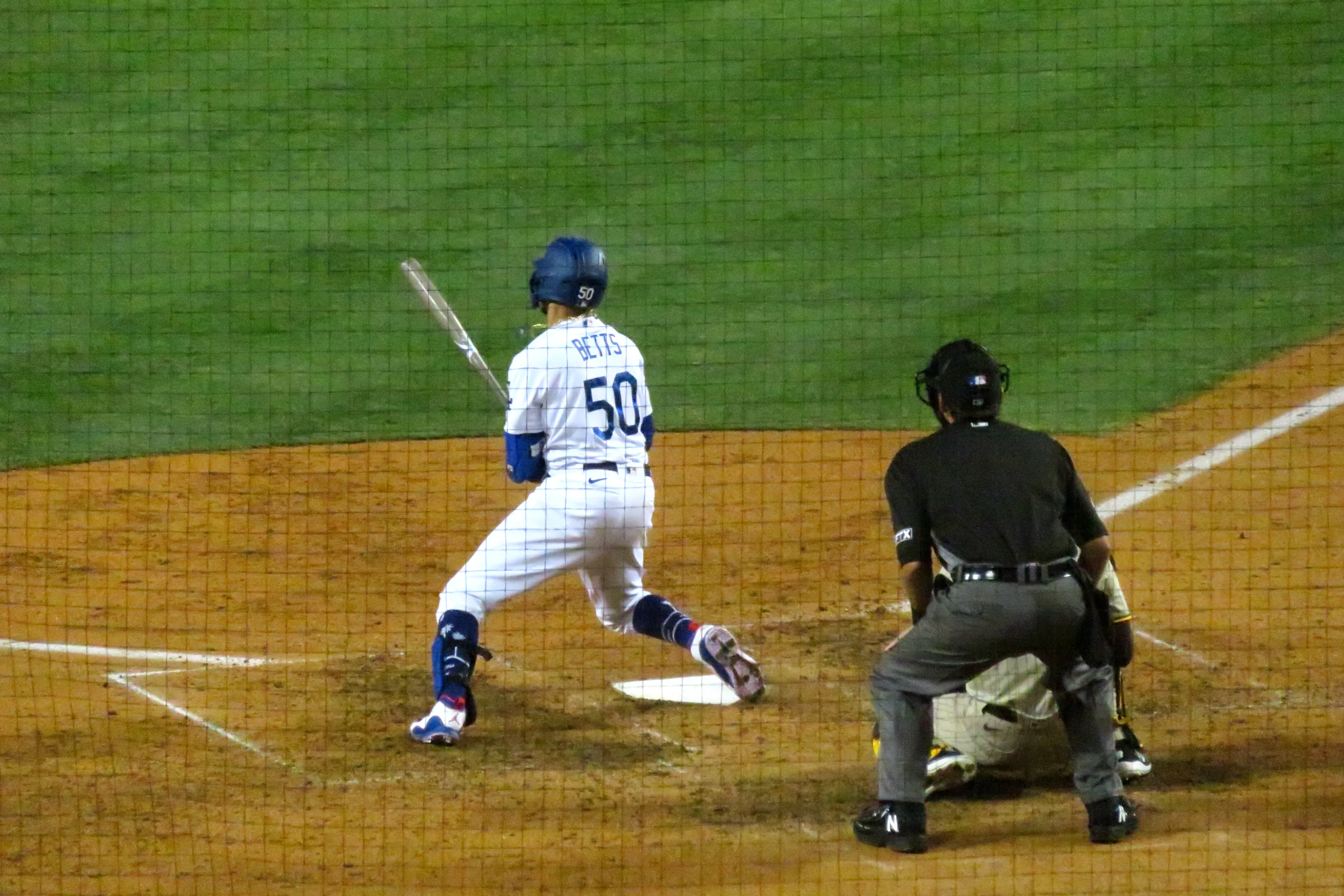





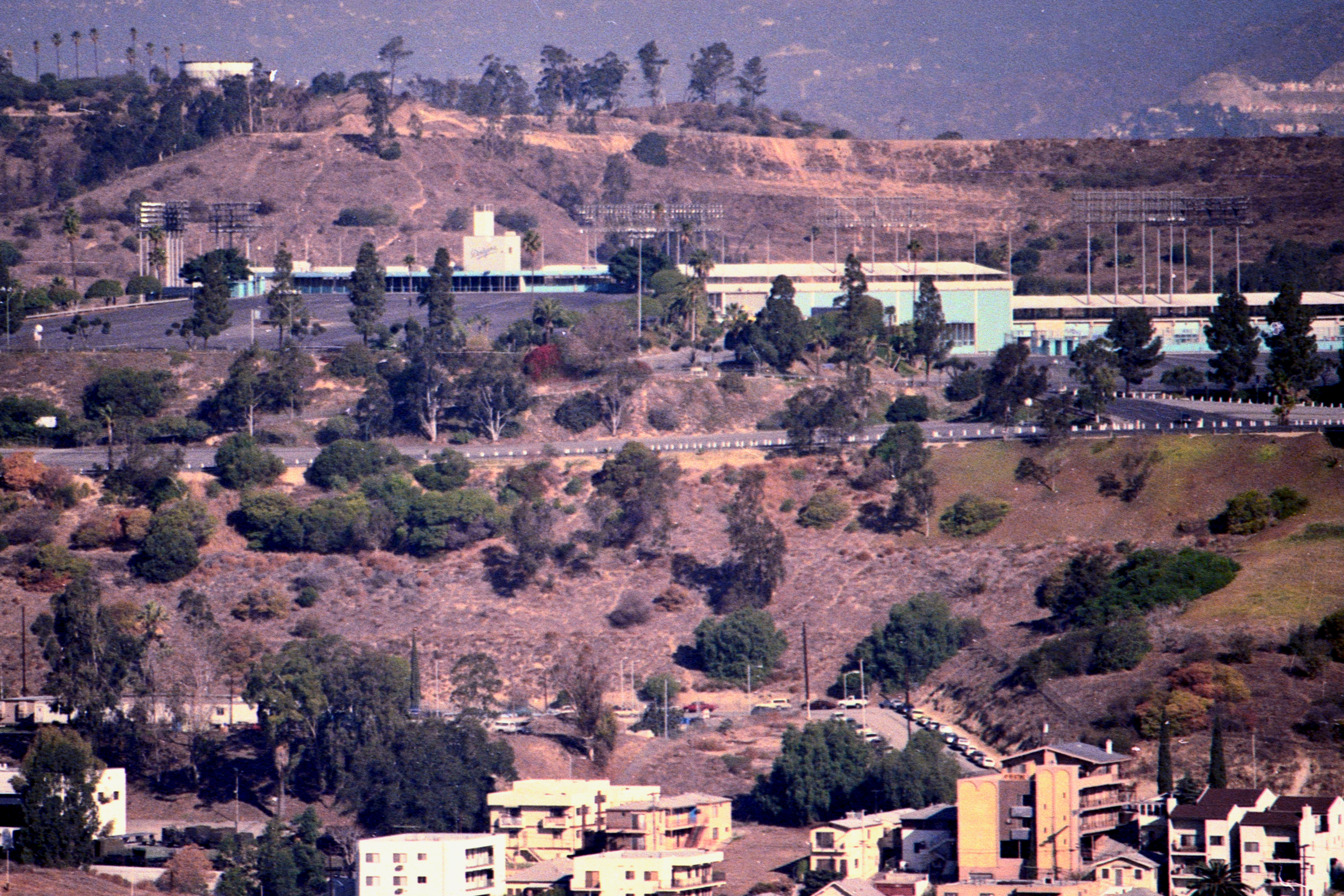


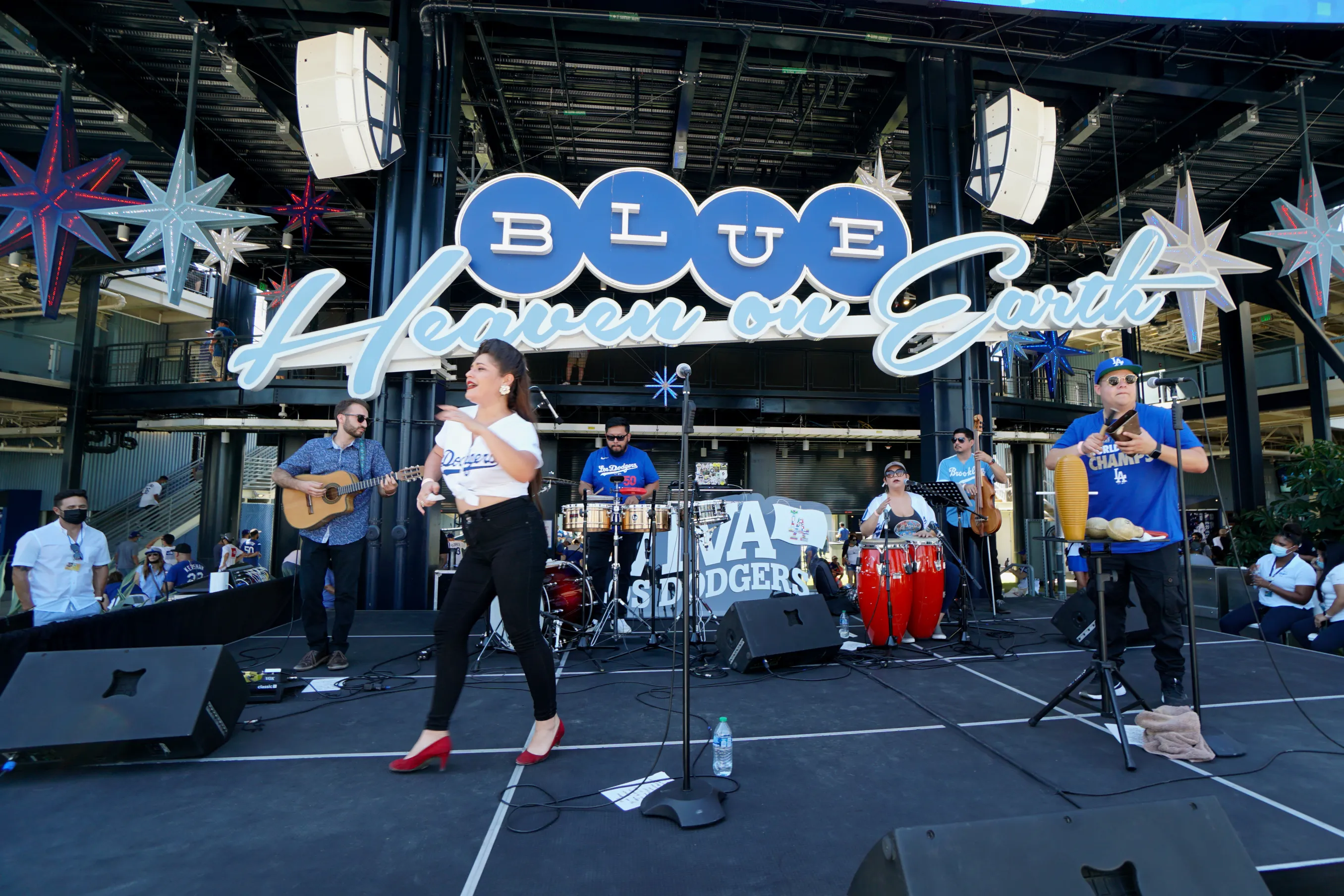



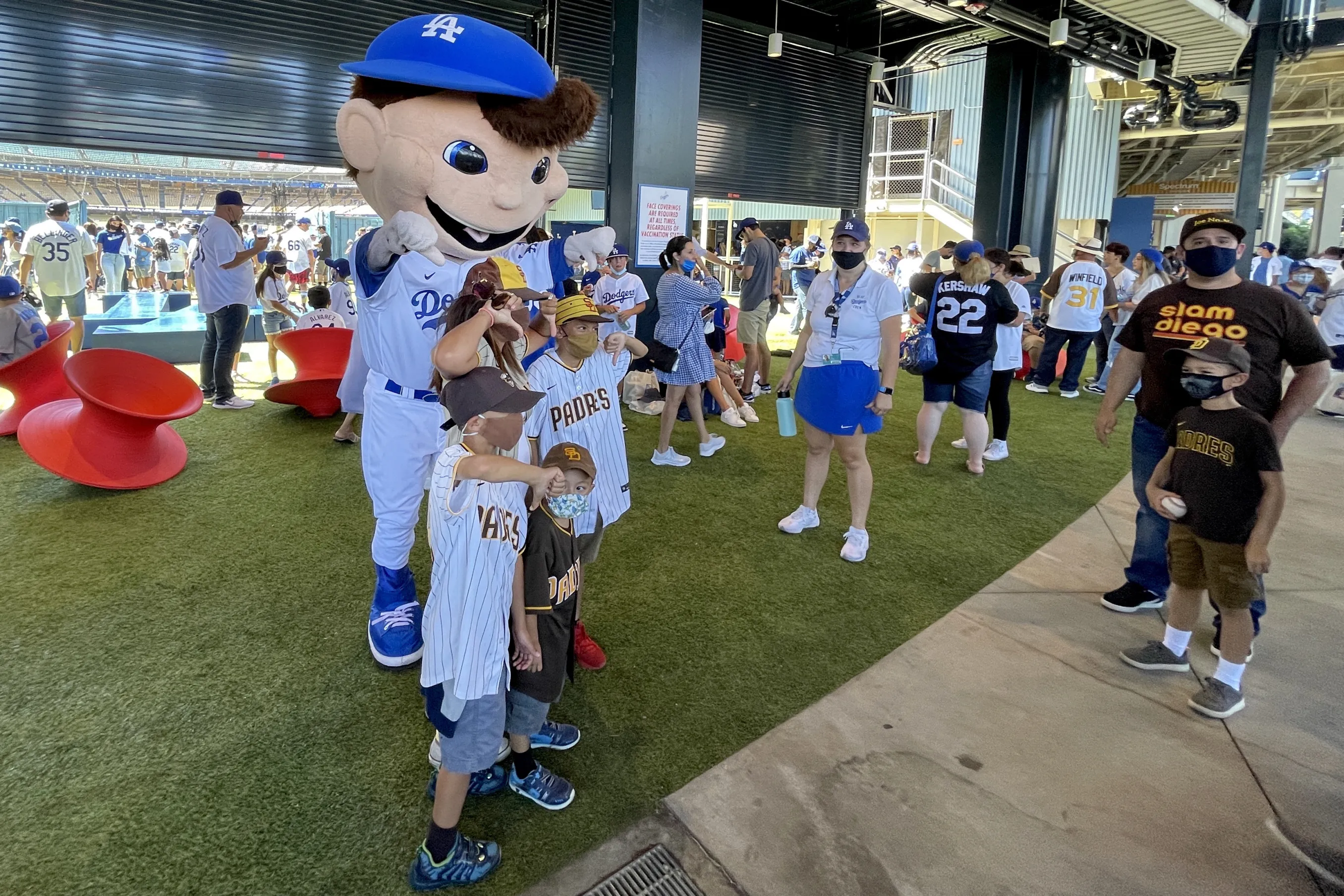



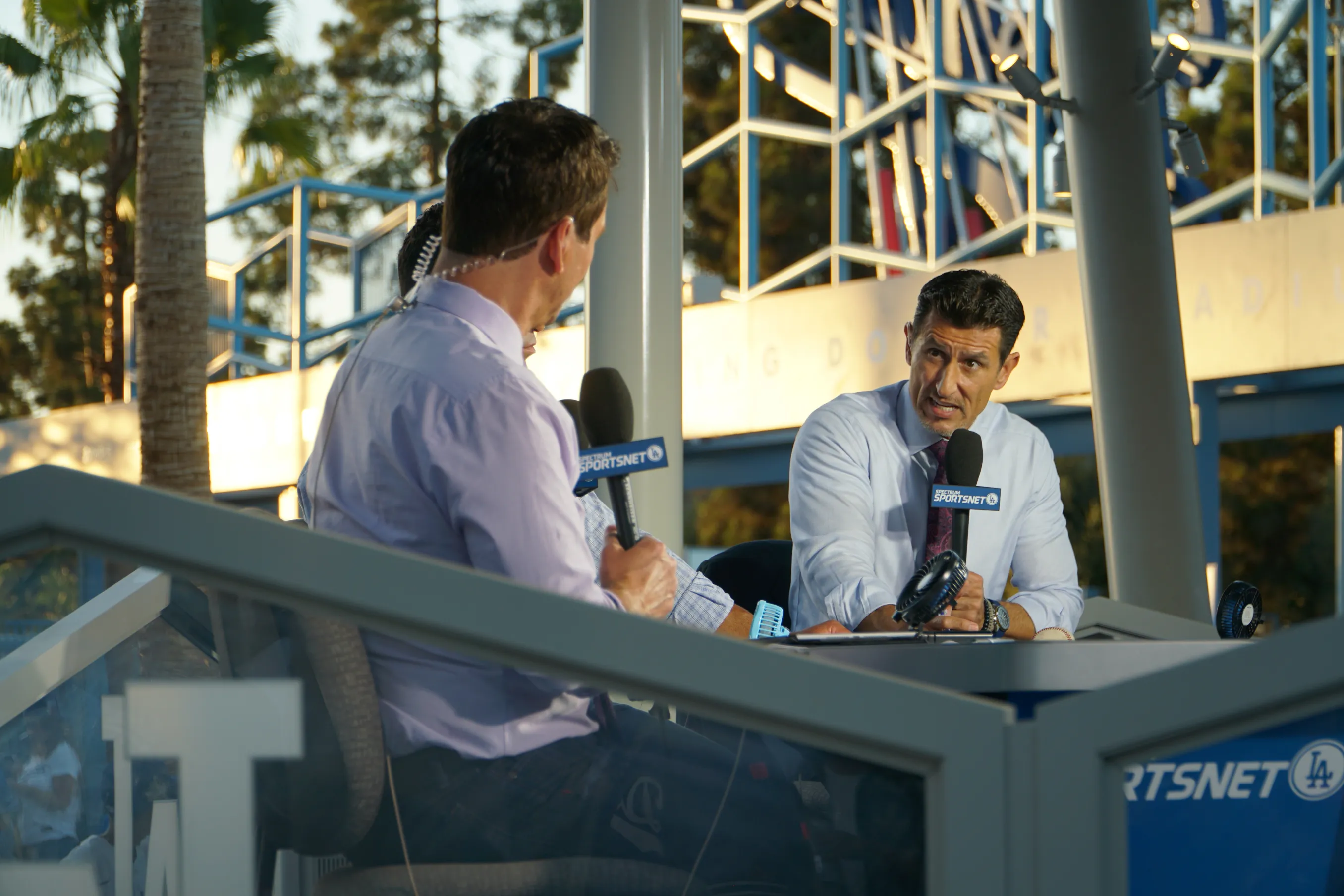






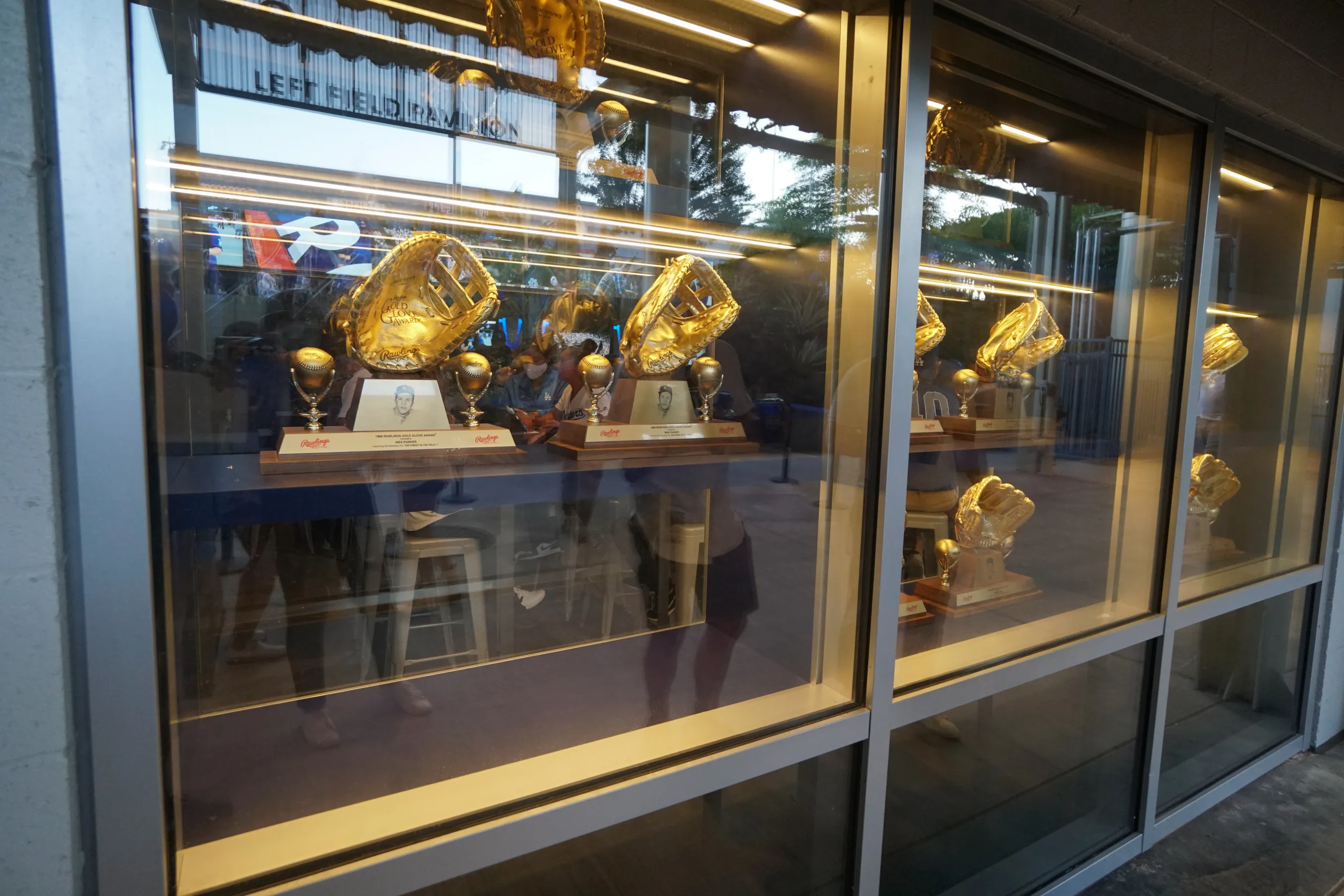










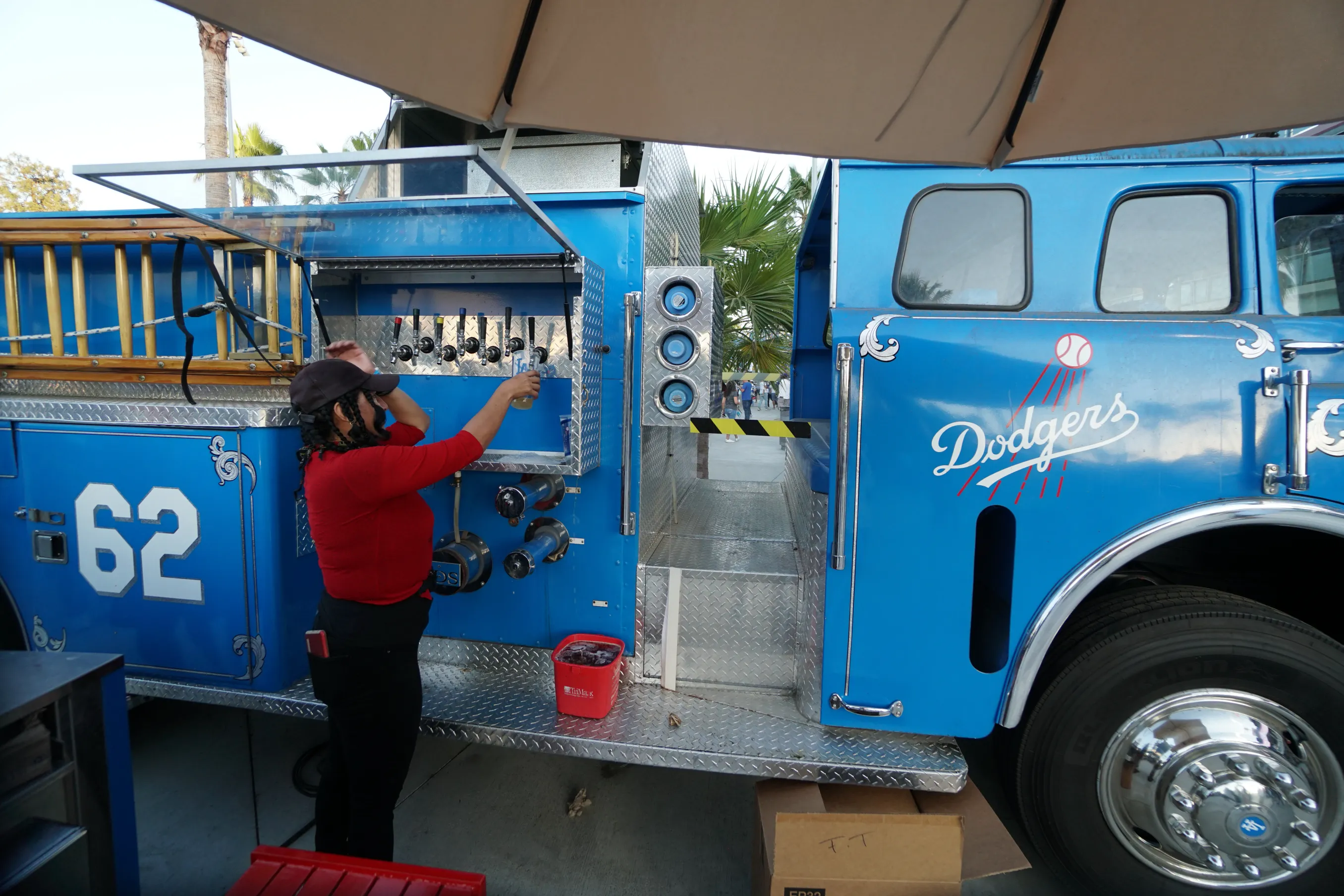




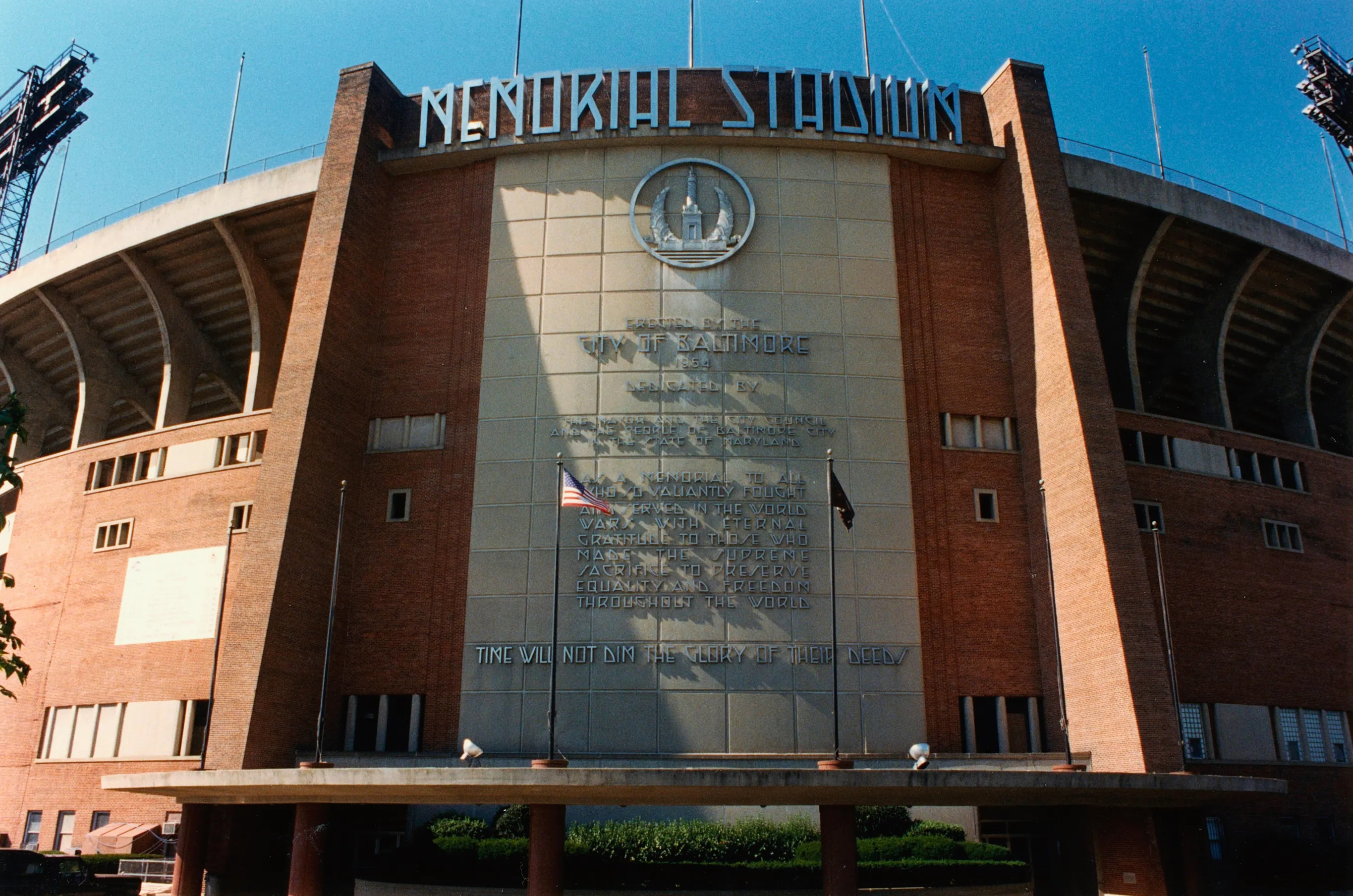



















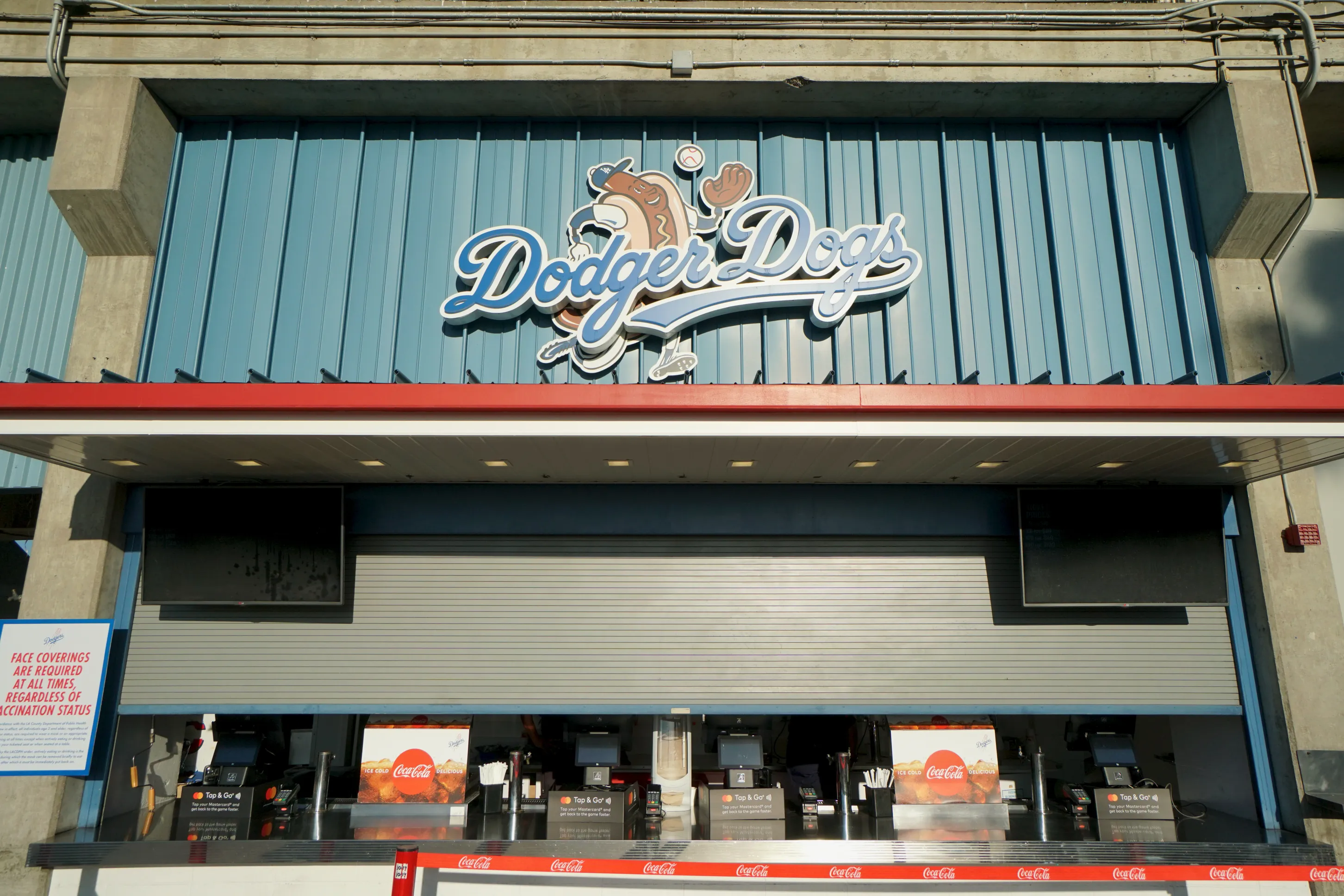


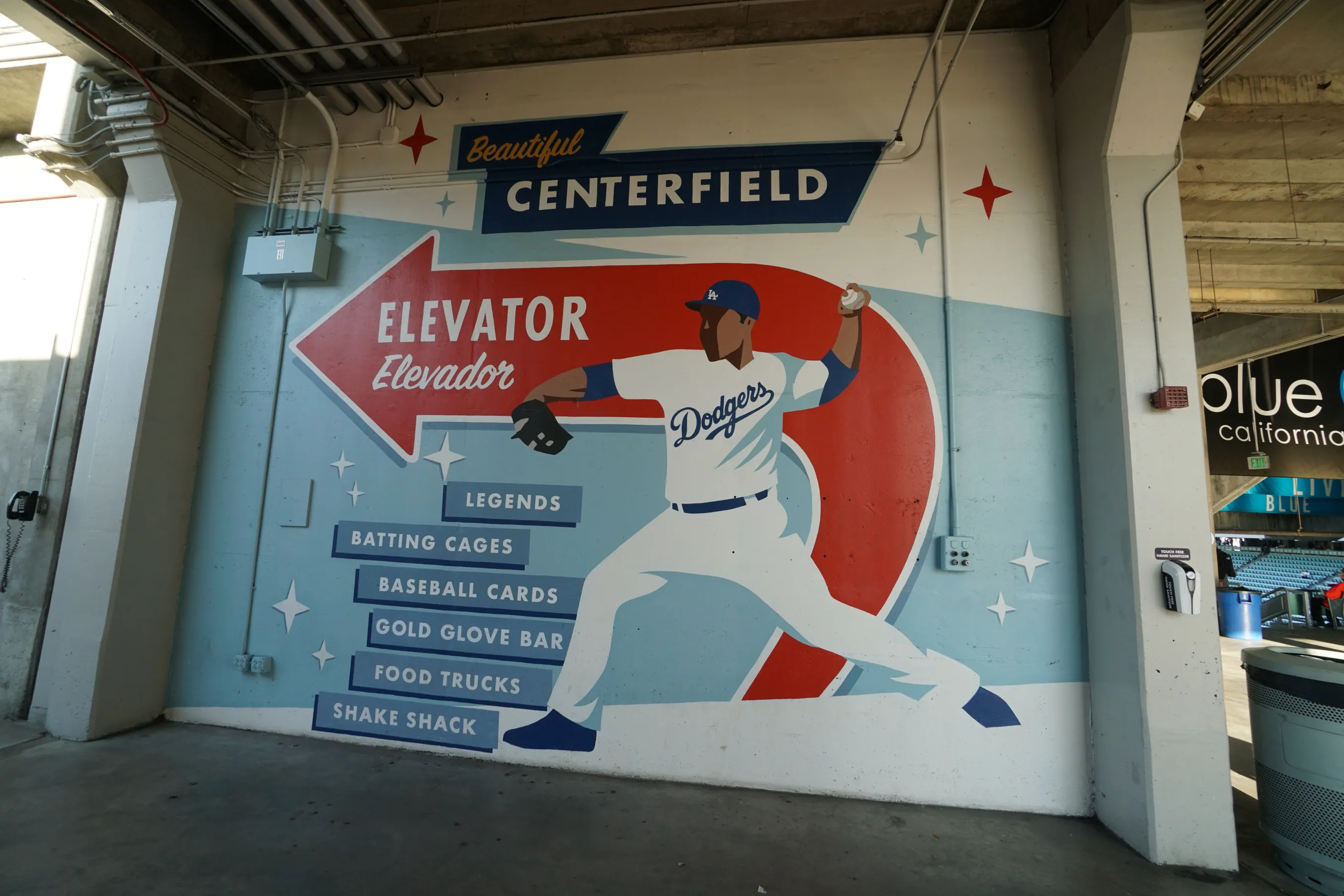





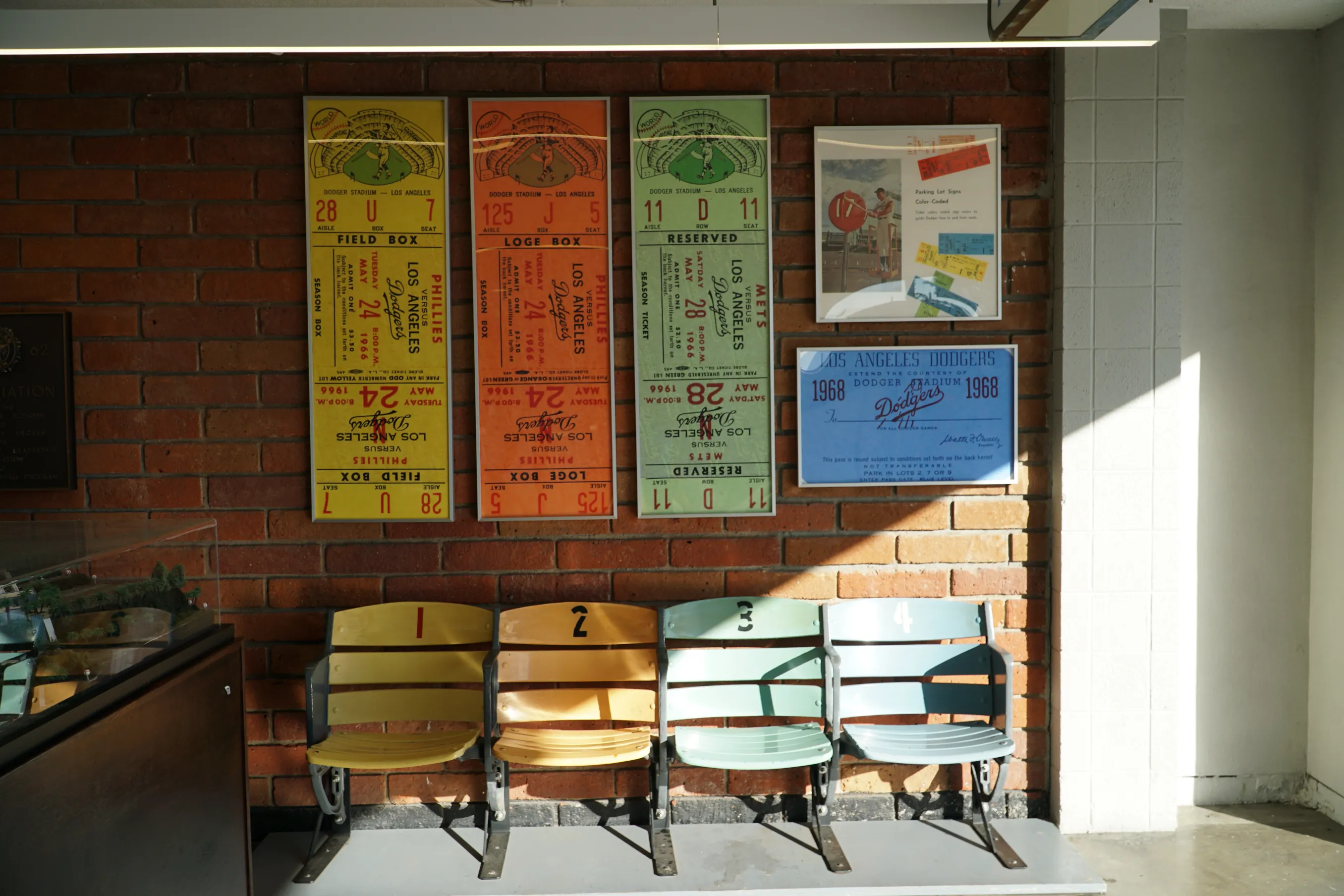




















Comentarios